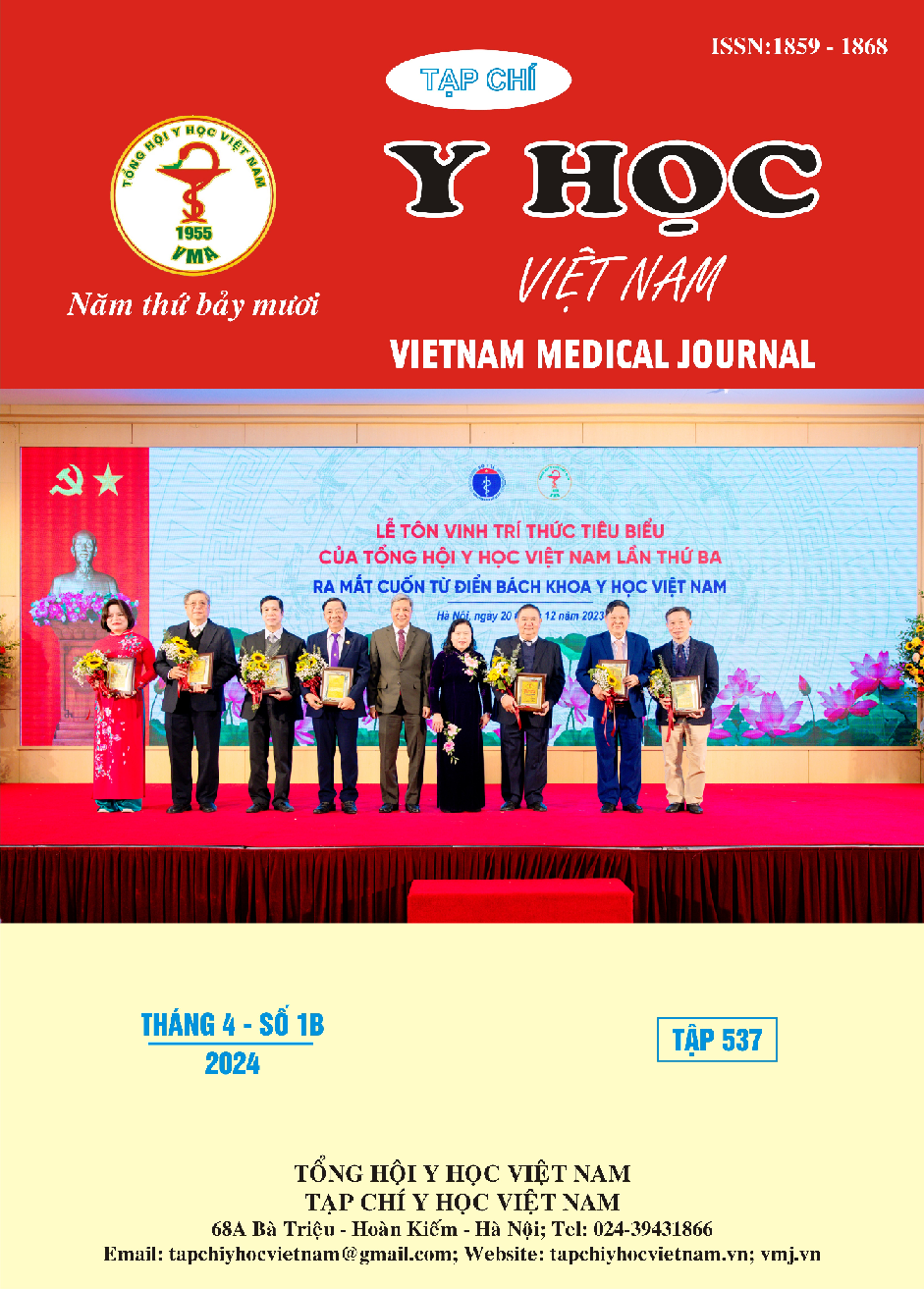SO SÁNH HIỆU QUẢ CỦA PHẪU THUẬT LẤY SỎI THẬN QUA DA ĐƯỜNG HẦM NHỎ VỚI ĐƯỜNG HẦM TIÊU CHUẨN ĐIỀU TRỊ SỎI THẬN ĐƠN GIẢN
Nội dung chính của bài viết
Tóm tắt
Mục tiêu: So sánh hiệu quả phẫu thuật lấy sỏi thận qua da đường hầm nhỏ với đường hầm tiêu chuẩn điều trị sỏi thận đơn giản. Bệnh nhân và phương pháp: Bệnh nhân được điều trị sỏi thận đơn giản bằng phẫu thuật lấy sỏi thận qua da, từ tháng 11 năm 2016 đến tháng 11 năm 2022 tại bệnh viện Bình Dân. Tất cả các trường hợp được thực hiện ở tư thế nằm sấp dưới hướng dẫn của C-arm. Kích thước đường hầm 26 Fr đối với sPCNL và đến 16,5 Fr đối với mPCNL. Sau quá trình can thiệp thì tất cả các trường hợp được mở thận ra da. Thiết kế nghiên cứu: đoàn hệ tiến cứu với nhóm chứng so sánh. Kết quả: Nghiên cứu bao gồm 178 bệnh nhân; 89 bệnh nhân được điều trị phẫu thuật lấy sỏi qua đường hầm tiêu chuẩn và 89 trường hợp lấy sỏi thận qua da với đường hầm nhỏ. Tỷ lệ sạch sỏi sau mổ 3 tháng tương đương nhau ở cả hai nhóm (91,01% đối với mPCNL và 94,38% đối với sPCNL, p > 0,05). Tỷ lệ biến chứng của mPCNL thấp hơn so với sPCNL (17,96% so với 24,27%, p = 0.048). Thời gian phẫu thuật và tỷ lệ truyền máu không có sự khác biệt giữa hai nhóm. Thời gian nằm viện đối với PCNL tiêu chuẩn dài hơn so với mPCNL (thời gian nằm viện trung bình là 3,17 so với 4,31 ngày, p <0,001) và thang điểm đau cao hơn ở nhóm sPCNL. Kết luận: Hiệu quả của mPCNL tương đương với sPCNL trong điều trị sỏi thận đơn giản. Ưu điểm của mPCNL bao gồm giảm đau và thời gian nằm viện ngắn hơn.
Chi tiết bài viết
Từ khóa
Lấy sỏi thận qua da qua (PCNL), lấy sỏi thận qua đường hầm tiêu chuẩn (sPCNL), lấy sỏi thận qua đường hầm nhỏ (mPCNL).
Tài liệu tham khảo
2. Gambaro G, Tzelves L, Skolarikos A, Kanbay M, Ortiz A, Cozzolino M. The new guidelines of the European Association of Urology on Urolithiasis: the urology–nephrology intersection. Nephrology Dialysis Transplantation. 2022;
3. Assimos D, Krambeck A, Miller NL, et al. Surgical management of stones: American urological association/endourological society guideline, PART I. The Journal of urology. 2016;196(4):1153-1160.
4. ElSheemy MS, Elmarakbi AA, Hytham M, Ibrahim H, Khadgi S, Al-Kandari AM. Mini vs standard percutaneous nephrolithotomy for renal stones: a comparative study. Urolithiasis. 2019; 47:207-214.
5. Kukreja RA. Should mini percutaneous nephrolithotomy (MiniPNL/Miniperc) be the ideal tract for medium-sized renal calculi (15–30 mm)? World Journal of Urology. 2018;36:285-291.
6. Feng D, Hu X, Tang Y, Han P, Wei X. The efficacy and safety of miniaturized percutaneous nephrolithotomy versus standard percutaneous nephrolithotomy: A systematic review and meta-analysis of randomized controlled trials. Investigative and Clinical Urology. 2020;61(2):115-126.
7. Opondo D, Gravas S, Joyce A, et al. Standardization of patient outcomes reporting in percutaneous nephrolithotomy. Journal of endourology. 2014;28(7):767-774.
8. Cheng F, Yu W, Zhang X, Yang S, Xia Y, Ruan Y. Minimally invasive tract in percutaneous nephrolithotomy for renal stones. Journal of Endourology. 2010;24(10):1579-1582.
9. Zhong W, Zeng G, Wu W, Chen W, Wu K. Minimally invasive percutaneous nephrolithotomy with multiple mini tracts in a single session in treating staghorn calculi. Urological research. 2011;39(2):117-122.
10. Qin P, Zhang D, Huang T, Fang L, Cheng Y. Comparison of mini percutaneous nephrolithotomy and standard percutaneous nephrolithotomy for renal stones> 2cm: a systematic review and meta-analysis. International braz j urol. 2022;48:637-648.


